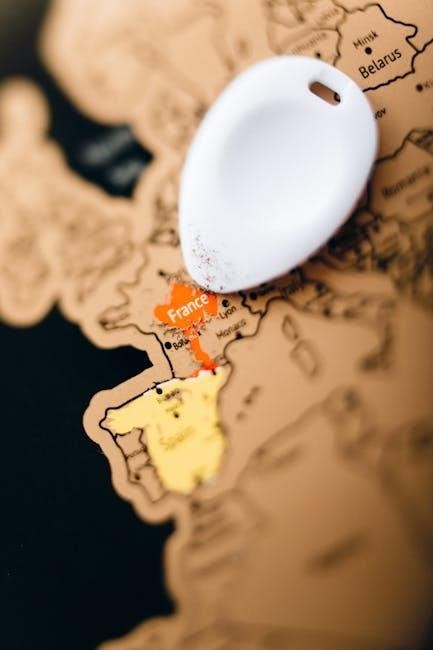Discover how tour guide systems enhance communication and organization for events, ensuring clear messaging and seamless group management. Ideal for tours, conferences, and large gatherings, these systems offer efficiency and clarity.
What is a Tour Guide System?
A tour guide system is a communication tool designed to facilitate clear, real-time audio guidance for groups. It typically consists of a wireless transmitter for the guide and receivers for participants, ensuring everyone hears the commentary without distractions. These systems are widely used in museums, city tours, and corporate events to enhance engagement and organization. By eliminating the need for loudspeakers or shouting, they provide a seamless and professional experience for both guides and participants, making them ideal for large or noisy environments.
Why Use a Tour Guide System for Your Event?
Using a tour guide system ensures clear and efficient communication, making it ideal for large groups and noisy environments. It enhances participant engagement by delivering real-time audio directly to each individual, eliminating the need for loudspeakers or shouting. This system is particularly beneficial for events like museum tours, corporate conferences, and city walks, where maintaining a professional and organized experience is crucial. It also allows guides to focus on delivering content without distractions, creating a seamless and enjoyable experience for everyone involved.

Types of Tour Guide Systems Available for Rental
Explore the three primary tour guide systems available for rental: wireless, wired, and hybrid, each offering unique advantages for different event needs and environments.
Wireless Tour Guide Systems
Wireless tour guide systems offer unparalleled flexibility and convenience, eliminating the need for cumbersome cables. These systems enable guides to move freely while ensuring clear, real-time communication to all participants. They are ideal for dynamic environments like city walking tours, museum visits, or large corporate events. Wireless systems typically consist of a transmitter for the guide and receivers for the audience, operating on specific frequencies to minimize interference. They are easy to set up and provide a seamless experience, making them a popular choice for event organizers seeking efficiency and reliability. Their portability and ease of use enhance overall event management and participant engagement.
Wired Tour Guide Systems
Wired tour guide systems provide reliable communication through physical connections, ensuring stability and clarity. They are often used in fixed locations like museums, classrooms, or conference rooms. These systems typically include headsets and cables, eliminating interference risks. While less flexible than wireless options, they offer consistent performance and are cost-effective for permanent setups. Wired systems are ideal for environments where mobility is not a priority, such as guided museum tours or educational seminars. They are durable and easy to maintain, making them a practical choice for organizations seeking dependable communication solutions without the hassle of wireless connectivity issues.
Hybrid Tour Guide Systems
Hybrid tour guide systems combine wired and wireless technologies, offering versatile solutions for diverse events. They provide the reliability of wired systems and the flexibility of wireless, making them ideal for large venues or dynamic environments. These systems are perfect for events requiring both stationary and mobile participants, such as conferences, museum tours, or outdoor activities; Hybrid systems allow seamless switching between modes, ensuring uninterrupted communication. They are highly scalable, accommodating varying group sizes and layouts. This flexibility makes them a preferred choice for organizers seeking adaptable and efficient communication solutions without compromising on performance or convenience.

Benefits of Renting a Tour Guide System
Renting a tour guide system enhances communication clarity, reduces noise, and ensures accessibility for all participants, making it ideal for large or diverse groups in any setting.
Enhanced Communication for Large Groups
For large groups, clear communication is essential. Tour guide systems ensure that every participant hears the guide’s voice clearly, regardless of their position. This eliminates the need for loud speaking, creating a more comfortable experience. The system allows the guide to focus on delivering detailed information without interruptions. It is particularly useful in noisy environments, where background noise might otherwise distract from the commentary. With a tour guide system, the message is conveyed consistently, ensuring everyone receives the same information simultaneously. This fosters a more engaging and inclusive experience for all participants. Enhanced communication is key to successful group tours.
Reduced Noise Pollution
Tour guide systems significantly reduce noise pollution by allowing guides to speak softly into a microphone, which is then transmitted directly to participants’ headsets. This eliminates the need for loudspeakers or raised voices, creating a quieter environment. In settings like museums, historical sites, or busy cities, this ensures minimal disruption to the surroundings. Participants enjoy a more comfortable experience, free from background noise, while the venue retains its natural ambiance. This feature is especially beneficial for maintaining tranquility in sensitive locations and enhancing the overall experience for everyone involved in the tour.
Improved Accessibility for All Participants
Tour guide systems promote inclusivity by ensuring all participants, including those with hearing impairments, can fully engage. Systems often include features like adjustable volume controls and compatibility with hearing aids, enabling clear audio for everyone. This technology also benefits international groups by supporting multiple languages through real-time translation options. Additionally, the convenience of wireless headsets allows participants to move freely without missing any information. By addressing diverse needs, tour guide systems create a more accessible and enjoyable experience for all attendees, regardless of their abilities or linguistic background.
How to Choose the Right Tour Guide System
Selecting the ideal tour guide system involves evaluating your event’s size, environment, and specific needs. Consider factors like range, audio quality, and compatibility with existing equipment to ensure seamless operation and optimal performance for your audience.
Assessing Your Event’s Needs
Evaluating your event’s requirements is crucial for selecting the right tour guide system. Consider the number of participants, venue size, and environment (indoor or outdoor). Determine if the event will involve multiple languages or require real-time communication. Assess the level of mobility needed for guides and participants. Identify potential noise levels that could interfere with audio clarity. Consider the duration of the event and the need for battery life or charging options. Understanding these factors ensures the system meets your specific demands, providing clear communication and an seamless experience for all attendees. This step is essential for optimizing performance and participant satisfaction.
Key Features to Look for in a Rental System
When selecting a tour guide system, prioritize features like wireless connectivity for portability, high-quality audio for clarity, and long battery life for uninterrupted use. Ensure the system supports multiple channels for simultaneous translations or commentary. Look for lightweight, durable devices designed for comfort and ease of use. Compatibility with additional audio equipment, such as microphones or existing sound systems, is essential. Scalability is also important to accommodate varying group sizes. Opt for systems with easy setup and user-friendly interfaces to minimize technical challenges. These features ensure a seamless and effective communication experience for both guides and participants during your event.
Comparing Different Rental Providers
When comparing rental providers, focus on their reputation, customer reviews, and pricing transparency. Check if they offer flexible rental periods and scalable solutions to accommodate your event size. Consider the variety of equipment they provide, such as wireless or hybrid systems, and ensure they meet your technical requirements. Look for providers offering additional services like delivery, setup, and on-site support. Compare hidden fees, return policies, and post-rental procedures to avoid surprises. Finally, assess their responsiveness and ability to address last-minute changes or issues, ensuring a smooth experience for your event.

Rental Process and Requirements

Rental Process and Requirements
Renting a tour guide system involves selecting the right equipment, confirming availability, and agreeing to terms. Ensure all requirements are met for a seamless rental experience.
Step-by-Step Guide to Renting a Tour Guide System
Start by assessing your event’s needs, including group size and environment. Choose a rental provider offering suitable systems. Reserve equipment in advance to ensure availability. Review and sign the rental agreement, understanding terms like duration, payment, and damage policies. Provide necessary identification and deposits as required. Schedule delivery or pickup, and confirm setup instructions. Test the system before use to ensure proper functionality. Train guides and staff on operation. Monitor equipment during the event and address any issues promptly. Return all items in good condition to avoid additional fees.
What to Expect During the Rental Period
During the rental period, expect seamless communication and reliable performance from the tour guide system. Most providers offer delivery and setup services, ensuring everything is ready for your event. Technical support is typically available to address any issues promptly. Be prepared to monitor equipment condition to avoid damage fees. After the event, arrange for timely return, ensuring all components are accounted for. Providers may inspect equipment upon return to check for damages or missing items. Clear communication with the rental company throughout the process ensures a smooth experience from start to finish.
Return Policy and Post-Rental Procedures
After your event, ensure all equipment is packed securely and returned by the agreed deadline to avoid late fees. Most providers inspect equipment upon return to check for damage or missing items. Any damages or losses may incur additional charges. Once everything is verified, the provider will process your refund or finalize the rental agreement. Be sure to review the return policy beforehand to understand expectations. Clear communication with the rental company ensures a smooth post-rental process and avoids unnecessary complications.
Technical Considerations
Understanding frequency range, battery life, and compatibility with other audio equipment ensures smooth operation and optimal performance during your event.
Understanding Frequency and Range
Frequency and range are critical for ensuring clear and uninterrupted communication. Wireless systems operate on specific frequencies, such as radio frequencies (RF) or infrared (IR), each with unique advantages; Understanding the range helps determine coverage for large venues or outdoor events. Environmental factors like walls, distance, and interference can impact signal strength. Choosing a system with adjustable frequencies minimizes cross-talk and ensures reliable transmission. Testing the system onsite is essential to optimize performance and avoid connectivity issues during events. Proper setup and positioning of transmitters and receivers are key to maximizing range and maintaining audio clarity for all participants.
Battery Life and Charging Options
Battery life is a key consideration for tour guide systems, ensuring uninterrupted use during events. Most systems offer 8 to 12 hours of continuous operation on a single charge. Rechargeable batteries are standard, with options like USB-C or charging stations for multiple devices. Some systems feature quick-charging, providing several hours of use in minutes. Best practices include charging overnight before events and having backup batteries on hand. Proper maintenance, like updating firmware and avoiding overcharging, extends battery longevity. Reliable power solutions are essential for seamless communication throughout your event.
Compatibility with Other Audio Equipment
Ensuring compatibility with existing audio equipment is crucial for a seamless experience. Tour guide systems often integrate with microphones, speakers, and other audio devices. Many systems support standard connectors like XLR, 3.5mm, or USB, making them versatile for various setups. Digital systems may also offer Bluetooth or Wi-Fi connectivity for modern devices. Always verify compatibility with your specific equipment before renting to avoid technical issues. Proper integration ensures high-quality audio transmission and enhances the overall effectiveness of your event or tour. This adaptability makes tour guide systems a flexible solution for diverse audio needs.
Cost and Budgeting
Understanding costs is essential for planning. Rental fees vary based on system type, duration, and features. Consider hidden charges and budget accordingly for a cost-effective solution.
Factors Affecting Rental Costs
The cost of renting a tour guide system depends on several factors, including the type of technology used, the number of devices required, and the rental duration. Wireless systems generally cost more than wired ones due to their convenience and mobility. Additionally, advanced features such as real-time translation or noise cancellation can increase the rental price. The size of the group also plays a role, as larger groups require more devices, thereby increasing the overall cost. Some providers may also charge extra for delivery, setup, or technical support during the event.
Hidden Fees to Be Aware Of
When renting a tour guide system, it’s important to review the rental agreement carefully to avoid unexpected charges. Common hidden fees include delivery and pickup costs, which can add up depending on the location. Some providers may also charge for technical support or on-site assistance during the event. Additionally, damage waivers or insurance fees might be included to cover accidental damage to the equipment. Returning equipment late or missing the agreed-upon deadline can result in late fees. Understanding these additional costs upfront helps in budgeting accurately and avoiding surprises.
How to Get the Best Value for Your Money
To maximize your budget, research providers and compare their pricing and services. Ask about package deals or discounts for long-term rentals. Ensure the system meets your specific needs to avoid overpaying for unnecessary features. Negotiate contract terms and clarify all costs upfront to prevent surprises. Consider the scalability of the system for future events. Finally, ensure clear communication with the provider to tailor the rental to your needs, ensuring you receive the best value without compromising on quality or functionality.

Troubleshooting Common Issues
Address connectivity problems by checking frequencies and interference sources. Ensure devices are fully charged and functioning properly. Restart equipment if issues persist and consult technical support if needed.
Resolving Connectivity Problems
Connectivity issues in tour guide systems often stem from frequency interference or weak signals. Ensure all devices are on the same channel and within range. Restarting the system can resolve many problems. Check for physical obstructions like walls or distance, which can disrupt signals. If issues persist, consult the rental provider’s technical support for assistance. Regular testing before events helps identify and fix problems early, ensuring smooth communication during tours or presentations. Maintaining updated firmware and proper device synchronization is also crucial for optimal performance.
Dealing with Audio Interference
Audio interference in tour guide systems can disrupt clear communication, often caused by electromagnetic interference or nearby electronic devices. To address this, switch to a different frequency or channel to minimize overlap. Ensure all devices are updated with the latest firmware and use high-quality equipment to reduce static. Physical obstructions, like walls or metal structures, can also cause interference, so repositioning the transmitter or receiver may help. Testing the system in the actual environment beforehand is crucial to identify and resolve any issues. If problems persist, consult the rental provider for technical support or alternative solutions.
Addressing Equipment Malfunctions
If equipment malfunctions occur during your rental period, act quickly to minimize disruption. First, check all connections and ensure devices are powered on correctly. Restarting the system or replacing batteries may resolve issues. If a specific unit is faulty, swap it with a spare from your rental package; Test the system beforehand to identify potential problems. Keep the rental provider’s contact information handy for urgent assistance. Regular maintenance and proper storage can prevent malfunctions, ensuring smooth operation throughout your event. Addressing issues promptly helps maintain a seamless experience for both guides and participants.
Best Practices for Using a Rented Tour Guide System
Ensure guides communicate clearly, participants have functional devices, and systems are tested beforehand. Minimize background noise, maintain equipment organization, and coordinate with staff for a smooth experience.
Setting Up the System for Optimal Performance
Ensure all equipment is fully charged and tested before use. Position transmitters and receivers to minimize interference. Assign clear channels to avoid cross-talk. Conduct a sound check in the event space to ensure clarity. Secure devices to prevent accidental movement. Provide participants with simple instructions for using the system. Monitor battery levels throughout the event and have backup units ready. Organize cables neatly to prevent tripping hazards. Adjust microphone sensitivity for optimal audio quality. Have a technical support contact available for troubleshooting. These steps ensure a seamless and professional experience for all participants.
Guidelines for Guides and Participants
Guides should test equipment before starting, speak clearly, and maintain a steady pace. Participants should arrive early, turn on devices, and adjust volume. Encourage questions and active listening. Ensure all users understand how to operate the system. Remind everyone to return equipment after use. Provide clear instructions and demonstrate proper handling. Emphasize the importance of staying within range for optimal audio quality. Encourage feedback to address any issues promptly. By following these guidelines, both guides and participants can ensure a smooth and enjoyable experience for everyone involved in the tour or event.
Maintenance Tips During the Rental Period
Regularly inspect all equipment for damage or wear. Charge batteries fully before each use and avoid overcharging. Store devices in protective cases when not in use. Clean headsets and transmitters with soft cloths to prevent dirt buildup. Ensure proper ventilation to avoid overheating. Avoid exposing equipment to extreme temperatures or moisture. Test audio clarity daily and replace faulty units promptly. Keep track of all components to prevent loss. Follow the provider’s maintenance guidelines to ensure optimal performance. Proper care extends equipment lifespan and guarantees reliable operation throughout the rental period.

Popular Use Cases for Tour Guide Systems
- Corporate Events and Conferences: Ensure clear communication in large venues.
- Museum and Gallery Tours: Provide detailed insights without noise interference.
- City Walking Tours: Enhance sightseeing experiences with real-time commentary.
Corporate Events and Conferences
Corporate events and conferences greatly benefit from tour guide systems, ensuring clear communication in large venues. These systems allow speakers to address attendees seamlessly, even in noisy environments, while enabling simultaneous translations for diverse audiences. They also facilitate organized group movements during networking sessions or facility tours. With features like wireless connectivity and real-time audio, these systems enhance attendee experience, making events more engaging and professional. They are ideal for product launches, team-building activities, and international meetings, ensuring all participants stay informed and connected throughout the event. This technology is a cornerstone for modern corporate engagement and efficiency.
Museum and Gallery Tours
Museum and gallery tours are elevated by tour guide systems, enabling visitors to immerse themselves in exhibits without distractions. Wireless audio ensures clear narration from guides, while minimizing noise disruption in quiet spaces. These systems also accommodate multilingual audiences through simultaneous translations, enhancing accessibility for international visitors. They allow groups to move seamlessly through exhibits, maintaining organization and engagement. Additionally, tour guide systems help preserve artifacts by reducing crowd noise and ensuring respectful distancing. This technology is essential for creating educational and enriching experiences in cultural and artistic spaces, making it a vital tool for modern museums and galleries.
City Walking Tours and Sightseeing
City walking tours and sightseeing excursions benefit greatly from tour guide systems, ensuring every participant can hear clear, detailed commentary even in noisy urban environments. These systems allow guides to share historical insights and hidden gems without raising their voice, preserving the natural ambiance of the tour. Wireless technology enables groups to move freely, exploring landmarks and streets without missing a word. Additionally, multilingual capabilities cater to diverse audiences, while real-time audio ensures seamless communication. This makes tour guide systems an indispensable tool for creating engaging and informative city experiences, enhancing the connection between visitors and the urban landscape.
Future Trends in Tour Guide Technology
The future of tour guide technology lies in advanced wireless systems, smartphone integration, and sustainable solutions, enhancing accessibility and user experience for guided tours worldwide.
Advancements in Wireless Communication
Recent advancements in wireless communication have revolutionized tour guide systems, offering longer ranges, interference-free signals, and low-latency transmission. These improvements ensure crisp audio quality, even in large or noisy environments, enhancing the overall experience for participants. With the adoption of next-generation wireless technologies, tour guide systems are becoming more reliable and scalable, catering to diverse event sizes and complex venues. Additionally, these systems now support real-time translations and multilingual broadcasts, making them indispensable for international events and global audiences. Such innovations are setting new standards in the industry, driving demand for modern, efficient solutions.
Integration with Smartphones and Apps
Tour guide systems are increasingly integrating with smartphones and apps, enabling real-time audio delivery directly to participants’ devices. This innovation allows for personalized experiences, with features like multilingual support and interactive maps. By eliminating the need for physical receivers, this approach reduces logistics and costs. Additionally, apps can collect real-time feedback and provide post-tour surveys, enhancing engagement and improving future events. This seamless integration also supports contactless operations, aligning with modern safety and convenience expectations. As technology advances, app-based systems are becoming a cornerstone of efficient and engaging tour experiences.
Sustainability and Eco-Friendly Solutions
The rental industry is embracing sustainability by offering eco-friendly tour guide systems. Many providers now use energy-efficient equipment and recyclable materials, reducing environmental impact. Digital solutions, like app-based systems, minimize the need for physical devices, lowering electronic waste. Some companies even offer solar-powered options or biodegradable accessories. These practices not only align with global sustainability goals but also appeal to environmentally conscious clients. By adopting green technologies, the industry ensures a smaller carbon footprint while maintaining high performance and reliability for events and tours.
Renting a tour guide system offers a practical solution for clear communication, ensuring seamless group management and enhanced experiences. Its benefits make it a valuable investment for any event.
Final Thoughts on Renting a Tour Guide System
Renting a tour guide system is a practical and effective solution for enhancing communication and organization in various events. It ensures clear messaging, reduces noise, and improves accessibility for all participants. Whether for corporate events, museum tours, or city walks, these systems provide seamless group management and elevate the overall experience. By investing in a rental system, event organizers can create a more engaging and inclusive environment. Always consider your event’s specific needs and plan accordingly to maximize the benefits of this valuable tool for future gatherings and activities.
How to Plan for Future Rentals
Planning for future rentals involves evaluating past experiences and gathering feedback to refine your needs. Assess the performance of previously rented systems and identify areas for improvement. Create a checklist of features and requirements based on your event’s size and type. Budget accordingly and research providers in advance to ensure availability. Consider flexibility and scalability for varying group sizes. Booking early and maintaining open communication with rental companies can ensure a smooth process. Regularly reviewing and updating your rental strategy will help you stay prepared for upcoming events and deliver exceptional experiences for participants.
